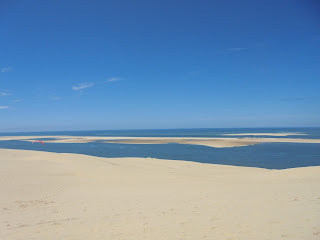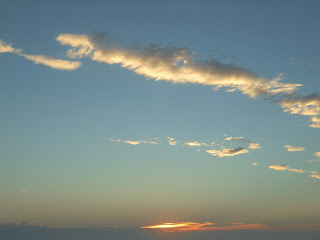If Amsterdam is the Venice of the North, Venice, is, well……Venice! It has to be one of the most beautiful cities in the World. It is both ridiculously
busy around the main tourist areas and signed tourist thoroughfares and yet eerily
quiet just a few feet away. The trick, I think, is to get off the beaten track
and to explore the small alleyways at random, just following your instincts and
what looks interesting or promising. Often this means arriving at a dead-end,
where the small street just terminates at an archway and a blue, ribbon like
canal. At other times it means falling from a dark, dim alley into a brightly
lit, deserted piazza with an empty outdoor restaurant and a 15th
Century Church with leaning campanile, or into smaller squares of a few houses,
each with slatted green shutters at the windows and a bronze doorbell and
plaque with the name of the owners outside each house. At other times, you step
unexpectedly into a very busy alley, thronging with people, which comes as a
complete surprise. The fantastic thing is that you really don’t know what is
around the next corner. It is easy to spend hours just wandering around in this
haphazard way, often ending up in a completely opposite direction than one
might think. Indeed, despite following a map sometimes, the effect is the same –
miles from the intended direction, so at least this traipsing approach saves
any map reading embarrassment! The most interesting areas (for me, anyway), are
those where the locals live, with lines of clothing hanging across the narrow
streets, where working boats, used to carry goods around the city, are moored
in the smaller canals and where children go to school in 13th and 14th
Century buildings.
On each night there are violent storms, which leave the
streets running with water like rivers, the cobbled streets and bridges
dangerously slippery and all the inhabitants soaking wet through, dripping
pools of water on the floor of the bus or tram. On one evening the thunder and
lightning was directly overhead, the sound of the thunder ripping the sky so
loudly that people would instinctively duck, their hands covering their heads
for protection at each explosion.
On Sunday morning, quite randomly, I stumble across the Vogalonga,
a colourful annual boating event where teams from across the world (I saw boats
from France, Canada and Hungary) take part in a non-competitive race in all
sorts of rowing boats (kayaks, canoes, gondolas, dragon boats and many other
types I don’t recognise). There are people in traditional Italian boating
costumes with straw hats and blue stripped shirts, many others are in fancy
dress, with brightly coloured wigs and T-shirts. It looks good fun and has a
sort of Italian organised chaos feel to it, with people in one boat throwing
bottles of water and bananas to the competitors, often missing completely, so
there are bananas bobbing in the water, boats bumping in to each other and an
announcer who seems to be commentating on events which have already happened,
or referring to the names of friends in boats that have already passed, which
is unintentionally funny!
It would be wonderful to live here for a period of time and to
get to know the history of that part of the city really well: the building, the
churches, the art museums, to be intimate with such a fantastic place would be
an amazing privilege.
 |
| St. Mark's Square |
 |
| St. Mark's Basilica |
 |
| It just couldn't be anywhere else, really, could it? |
 |
| A very stormy night |
 |
| Off the beaten track |
 |
| The Vogalonga |
 |
| Amazing 24 hour clock face |
 |
| Reflections in tranquillity |

























































